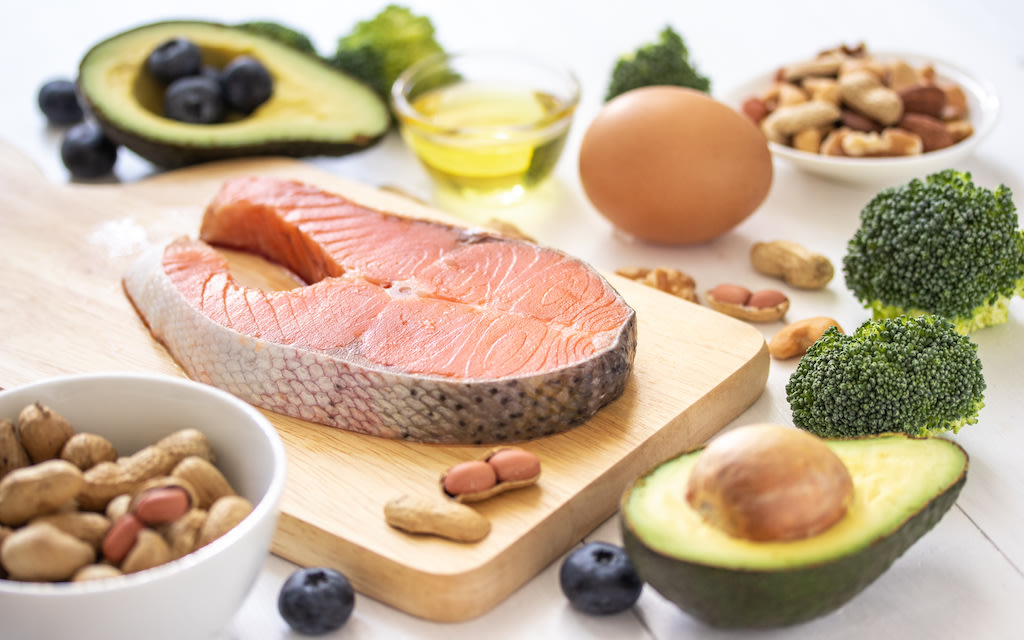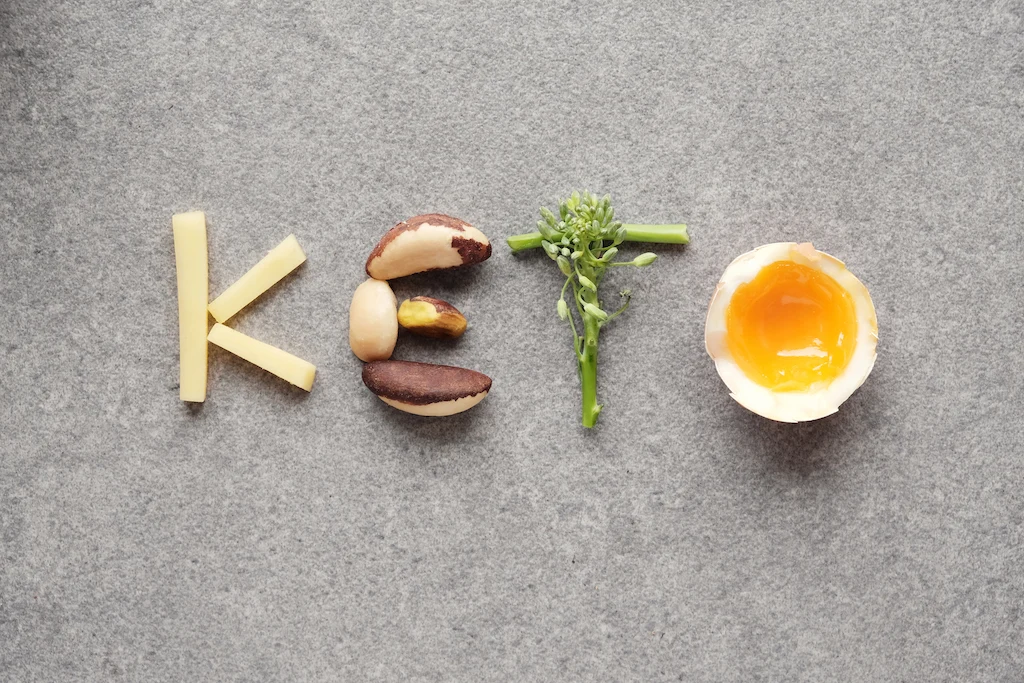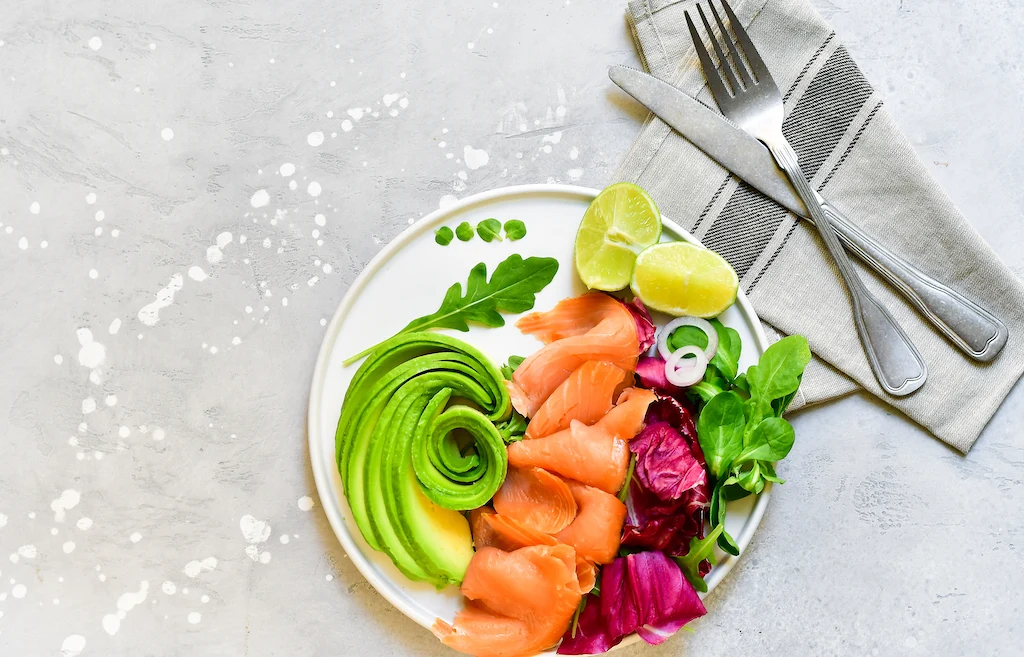What Is The Keto Diet?

August 30, 2019

If you have an interest in fitness, health and nutrition, you’ve probably heard about the keto diet.
The word ‘keto’ is short for ketogenic, and it’s also known as the low-carb diet, and the low-carb high fat (LCHF) diet. It’s a dieting trend that many are curious about, but may not be suitable for everyone, especially when embarking on a workout program.Jump to:
The keto diet is a popular topic in the SWEAT Community, so we’re providing some insight into the pros and cons of this style of eating.
Which foods are included in the keto diet?
The keto diet consists of very low amounts of carbohydrate, moderate amounts of protein and large amount of fats in daily intake.
Does this make you think of deep-fried and greasy takeaway foods? You might be surprised to know they’re not included in this style of eating.
Keto diet menu
A keto diet menu is filled with eggs, meat, poultry, dairy, vegetables, and fewer fruits, nuts and seeds. This might sound similar to what many of us would normally eat. The main difference is that bread, pasta, rice, grains — in other words, carbs — are missing from keto recipes.
Vegetables and fruit contain carbs, but the keto diet includes the low carbohydrate options from these food groups. If you love your vegetables, you won’t miss out, it’s just a case of being selective with the vegetables you eat.
For instance, a keto diet would include cabbage, leafy greens, cauliflower, broccoli, asparagus, zucchini, mushrooms and cucumber. Keto diet fruits are berries and they’re only allowed in moderation.
On a keto diet people usually eat between 20-50g of carbs per day. As a guide, 50g of carbohydrates is the same as 2 slices of wholemeal bread and 1 small apple.

What does keto mean?
The aim of the keto diet is to put the body into a metabolic state known as ketosis.
Ketosis means our body is using stored fat as an energy source, rather than glucose.
Usually, If we eat food that is high in carbs, our body breaks it down to glucose, which is the easiest molecule to use as energy. If glucose is the primary energy source for the body, fat is not needed for energy, so instead is stored within the body.
As carbs make up a reduced source of energy in a keto diet — about 10 percent of the total calorie (or kilojoule) intake — the body is in a constant state of ketosis. Another eating style that promotes ketosis is intermittent fasting.
This means the body’s reserve supplies of glucose start to run out and the body turns to the fat in the body as an energy source. The levels of insulin, a fat-storing hormone, also become very low and the fat stores are burned up as a result.
During ketosis the liver breaks down the fat to produce ketones. These become the main source of energy for the body. Apart from glucose, ketones are the only other energy source used by the brain.

Different types of keto diets
There are several different types of ketogenic diets. These include:
Standard ketogenic diet — a very low-carb, moderate-protein and high-fat diet. It is usually 75% fat, 20% protein and 5% carbs.
High-protein ketogenic diet — similar to the standard keto diet but includes more protein. It is usually 60% fat, 35% protein and 5% carbs.
Cyclical ketogenic diet — when following this diet there are periods of higher-carb days. For example: 5 days on a keto diet followed by 2 high-carb days.
Targeted ketogenic diet — following this diet allows you to add carbs around your workouts.
The standard and higher-protein keto diets are the more popular and have been researched broadly.

How do you know you are in ketosis?
If you follow a ketogenic diet, how do you know that you are in ketosis and burning fat? There are three possible ways to measure and test if you are in ketosis:
Urine strips — this is the easiest and cheapest way to measure whether you are in ketosis. After dipping a stick in your urine and waiting for 15 seconds a colour change will show whether ketones are present. If they are then you are in ketosis.
Breath ketone analyser — this measures the level of ketones in your breath. They are more expensive than the strips but are also reusable.
Blood ketone metre — these are an exact measure of the current ketone levels in your blood. This form of measurement is the gold standard. However, they are quite expensive.
There are some other signs that you might be in ketosis that don’t require testing, such as:
‘Keto breath’ — this is due to a ketone body called acetone coming out in your breath. It can smell a bit fruity and is just a temporary sign.
Frequent visits to the bathroom — due to increased thirst and drinking lots of water.
Reduced hunger — this occurs because of the body being fueled by its fat stores.
Increased energy — after a few days following the diet there may be an obvious increase in energy levels.
Should I try the keto diet?
Before choosing to follow the keto diet, here are some factors you should consider.

The benefits to the keto diet
Some scientific studies have found the keto eating plan may have benefits for some groups of people.
Studies have also shown that people that are overweight may also benefit from weight reduction by following a ketogenic diet, as stored fat is used to provide energy for the body.
Other studies have also shown that while following a keto diet, blood sugar and insulin levels can be considerably reduced and cholesterol levels may also improve.
Research has shown that a medically supervised ketogenic diet may benefit children with epilepsy, and reduce the number and severity of seizures.
As the keto diet means you are burning fat, you have a supply of stored energy that may last weeks or even months. Because of this, it is common that you may have a reduced appetite. This may make it easier to reduce portion sizes and may assist weight loss.
Because the brain isn’t using carbs on the keto diet, it is instead fuelled by ketones. With this constant supply of fuel (ketones) to the brain during the ketosis state, there are no blood glucose swings. This may result in improved mental clarity, concentration and focus. A constant supply of fuel may also impact and improve energy levels.

The side effects of the keto diet
A keto diet may also be high in saturated fats, low in fibre and missing some important vitamins.
Some people might feel generally unwell when they first start on a keto diet. Reported symptoms include stomach upset, nausea and lethargy. This is commonly referred to as ‘keto flu’ and generally passes after a few days.
Some other possible adverse side effects could include fatigue, constipation, diarrhoea, dehydration, headache and bad breath.
These side effects would most likely be due to the diet’s low fibre and its lack of some vitamins. Dehydration may also occur due to the water lost from the body when reducing carbohydrates.
How do I know if the keto eating plan is right for me?
Before making significant changes to your eating habits, it’s important to consult with a healthcare professional. As with any restrictive eating plan, the keto diet may not be suitable for everyone.
There are some groups of people that would need to seek professional advice before considering or starting any new eating regimen, including the keto diet.
These include people with Type 1 and Type 2 diabetes, high blood pressure, kidney or liver issues. It is also not advised for women who are pregnant or breastfeeding.
If you are starting a new exercise program, it’s important to take into account your nutritional needs and eating healthy so that you can reach your health and fitness goals.
Making healthy eating choices doesn’t have to be restrictive. Taking a balanced and consistent approach to your diet, by eating a wide variety of healthy foods, may be the best way to make lifestyle changes sustainable for the long term.

A more empowered you starts with Sweat, and our editorial team is here to bring you the latest fitness tips, trainer recommendations, wellbeing news, nutritional advice, nourishing recipes and free workouts.
* Disclaimer: This blog post is not intended to replace the advice of a medical professional. The above information should not be used to diagnose, treat, or prevent any disease or medical condition. Please consult your doctor before making any changes to your diet, sleep methods, daily activity, or fitness routine. Sweat assumes no responsibility for any personal injury or damage sustained by any recommendations, opinions, or advice given in this article.
Nutrition